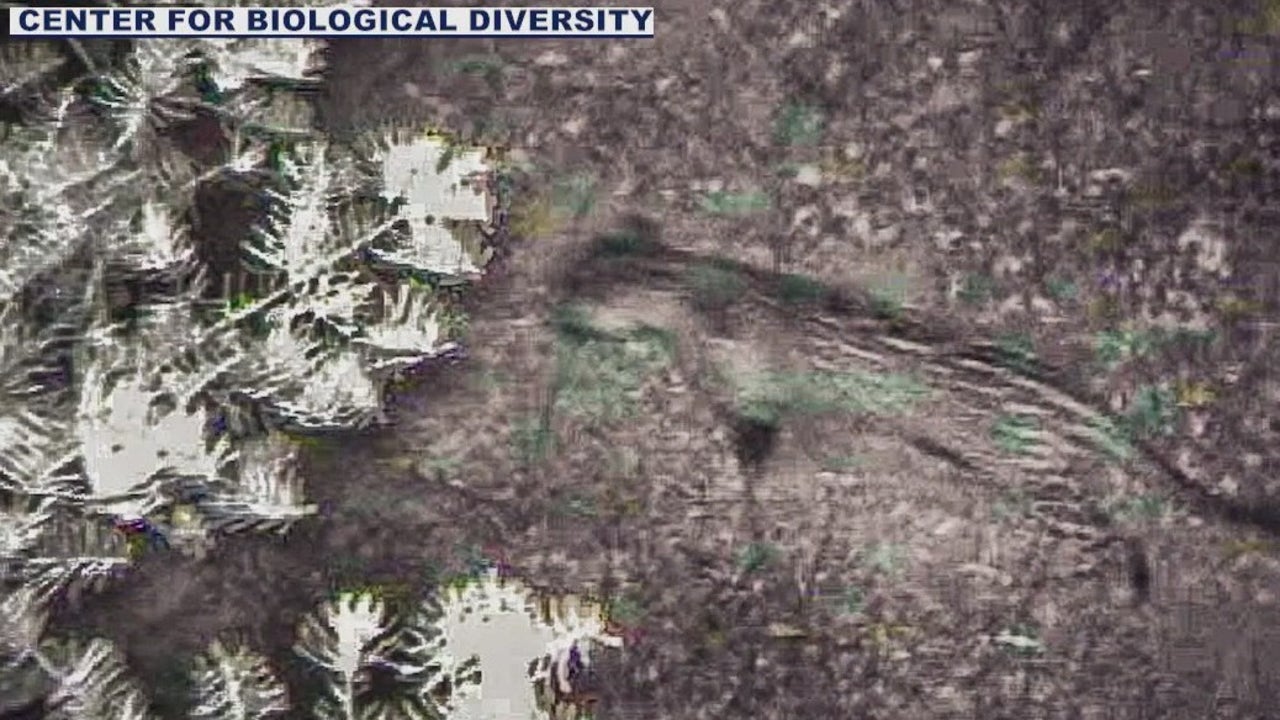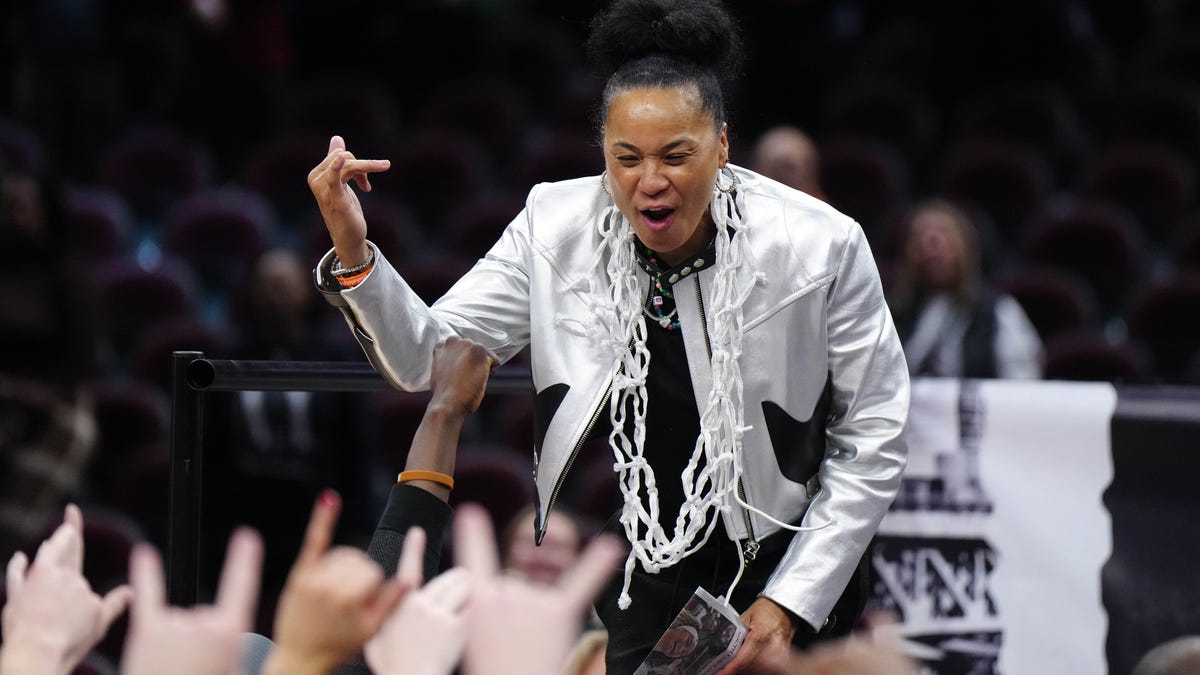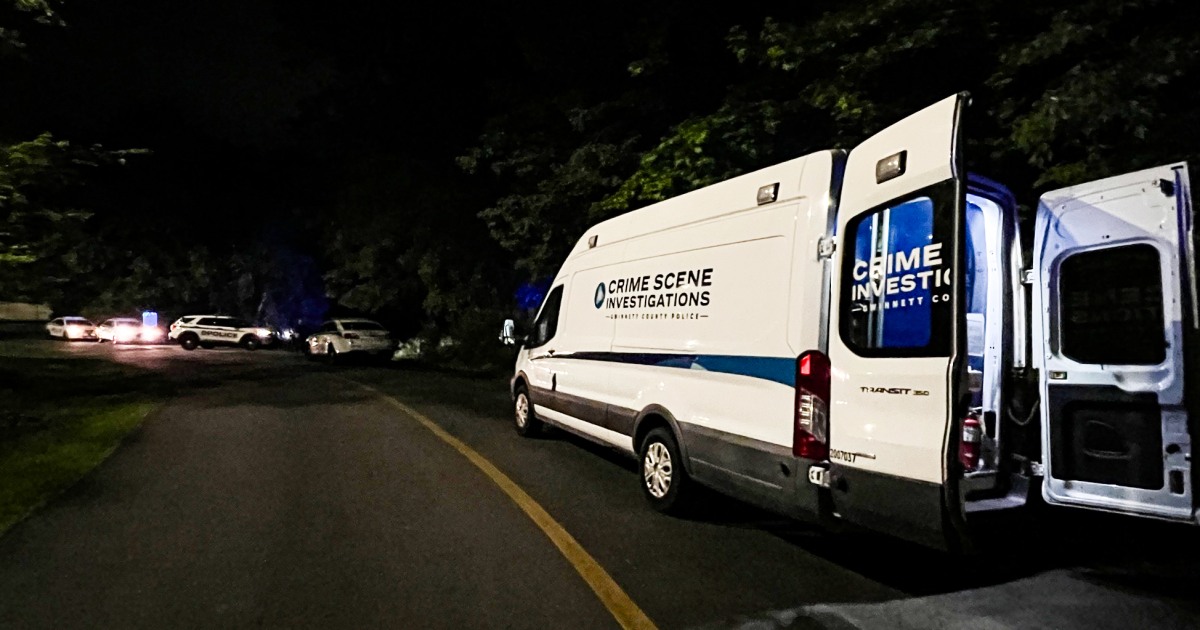Wisconsin
DOJ weighs in on Line 5 trespass on tribal land in Wisconsin
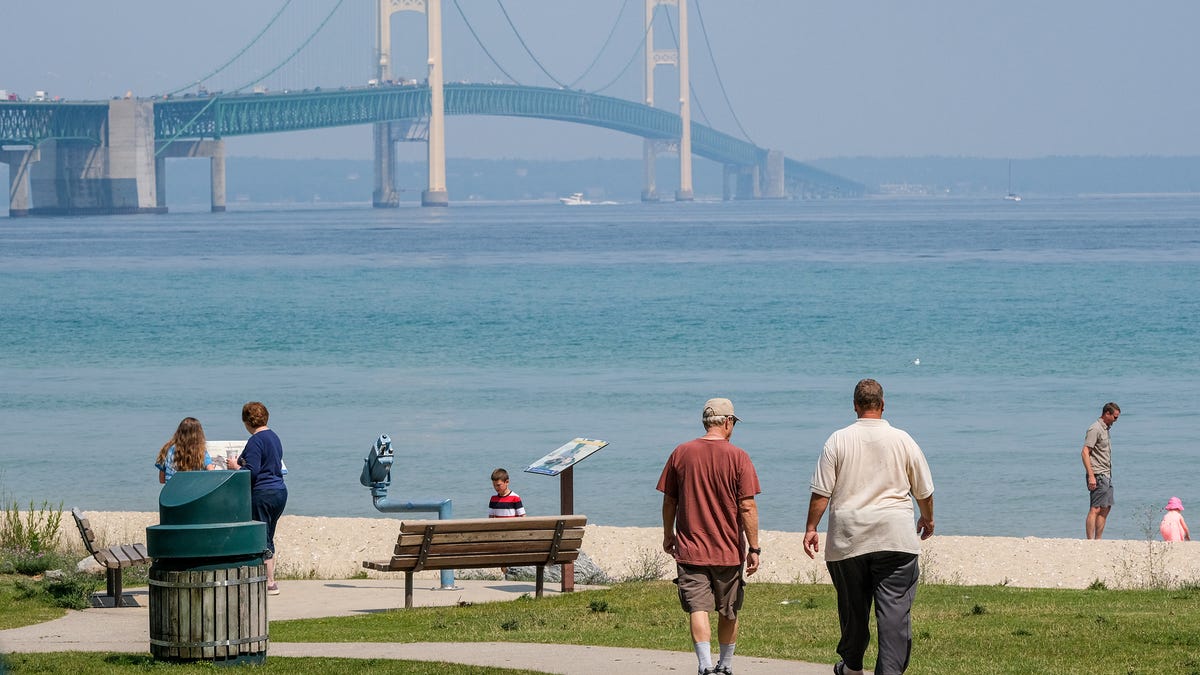
Federal government finds trespass is illegal, makes no move to remove pipeline
UPPER PENINSULA — The Enbridge Line 5 pipeline has been found to be illegally trespassing on tribal land in Wisconsin, but will not be moved any time soon.
After years of court arguments, lawsuits and delays, the federal government announced this week that Enbridge is in fact trespassing on land owned by the Bad River Band of Lake Superior Chippewa, but made no move to force the pipeline off the land.
Tribal groups in the Great Lakes region expressed relief that Enbridge’s trespassing is being viewed as a crime after more than 10 years, but are still angry that no move is being made to remove the pipeline.
The Department of Justice announcement urged the courts to penalize Enbridge for its continued trespassing but also suggested the courts could allow Enbridge to continue trespassing illegally.
“Today, the United States agreed that Enbridge’s ongoing occupation of our land is illegal. We are grateful the U.S. urged the court not to let Enbridge profit from its unlawful trespass,” said Bad River Band Chairman Robert Blanchard in a statement. “But we are disappointed that the U.S. has not unequivocally called for an immediate end to Enbridge’s ongoing trespass, as justice and the law demand. Enbridge should be required to promptly leave our reservation, just like other companies that have trespassed on tribal land. We are hopeful that the appeals court will put an end to Enbridge’s shameful decade of trespass and not condone its exploitation of our land and sovereign rights.”
Built in 1953, Enbridge Energy’s Line 5 spans 645 miles from Superior, Wisconsin to Sarnia, Ontario. The line transports light crude oil and natural gas liquids. Four miles of the pipeline — consisting of two, 20-inch pipelines — crosses through the Straits of Mackinac.
Line 5’s continued presence in the Straits of Mackinac has sparked serious concern from environmental groups and other advocates about the devastating risk of rupture. On the other side, proponents of the pipeline point to the economic impact and need for fuel transportation.
More: As legal sparring continues, Army Corps pushes Line 5 permit timeline to 2025
All 12 of Michigan’s federally recognized tribes, as well as tribes in Wisconsin, Minnesota and Canada, have passed resolutions calling for the decommissioning of Line 5.
While tribal communities express concerns about a possible oil spill and potential ecological harm, the Great Lakes are also significant in the creation stories of the Anishinaabe tribes.
On March 21, Michigan Attorney General Dana Nessel delivered oral arguments at the Sixth Circuit U.S. Court of Appeals in an attempt to bring the Line 5 decommission lawsuit back to the state of Michigan.
The Nessel vs. Enbridge lawsuit was originally filed in 2019 in Michigan, arguing that the 1836 Treaty of Washington guarantees these tribes the right to maintain their way of life in the ceded territory — a right, they claim, that will be destroyed if an oil spill from the pipeline contaminates the waters.
“We expect a fair trial that upholds the promises the United States government made to our ancestors,” said Sault Ste. Marie Tribe of Chippewa Indians Chairman Austin Lowes. “We are going to present the facts behind our case and will never stop standing up for our rights as Indigenous people and the sovereignty of our nation.”
Enbridge has successfully delayed the case multiple times and had it removed from state to federal court.
“If the United States supports Enbridge, it would destroy not only both tribal sovereignty but also state sovereignty with respect to the ability to manage land, resources and water for their citizens,” said Bay Mills Indian Community President Whitney Gravelle.
Lowes added that “Our treaty with the United States government predates any treaty that Enbridge is using in an attempt to justify its illegal pipeline operations.”
“Our case isn’t just about whether Enbridge can continue operating Line 5, but it could impact every federally recognized tribe’s right to control what happens on their land,” he said.
The Seventh Circuit Court of Appeals requested federal input in December 2023. After this, in early March, leaders of 30 Tribal Nations in the Great Lakes region sent a letter to President Joe Biden urging the United States to take action against Line 5’s trespass on the Bad River Band’s sovereign territories.
The Biden Administration has not responded to either request.
Subscribe: Get unlimited access to our coverage
More than 60 Tribal Nations supported Nessel in a motion to bring the case back to state court. The arguments for keeping the case in federal court or moving it back to state court were heard during the March 21 hearings at the Sixth Circuit U.S. Court of Appeals in Cincinnati.
Nessel maintains that this case belongs in state court based on Michigan’s sovereign responsibility to protect the public trust in the waters of the Great Lakes. She argued to the court that taking the case out of state court because Enbridge prefers a federal forum violates Michigan’s right to have state claims resolved in state court.
“The case law regarding a Tribal Nation’s sovereign right to maintain their homelands and thus their reservations is a core aspect of tribal sovereignty and any position to the contrary would be unexpected and shocking,” said Gravelle.
Assistant Attorney General Dan Bock argued to the Sixth Circuit that by waiting more than two years to move the case to federal court, Enbridge’s removal was untimely and must be rejected. Bock also argued that, timing issues aside, the federal court misapplied the law when it ruled that the case belongs in federal court rather than state court.
Enbridge’s attorney Alice Loughran argued that the removal to federal court was timely, and it should remain in federal court because federal issues dominate the case. Those issues include the impact of the 1977 U.S.-Canada transnational pipelines treaty, the federal Submerged Lands Act and the extensive federal regulation of oil pipelines.
Enbridge argued that the state’s rights to protect the waters of the Great Lakes and the company’s right to protect commerce profits are federal issues.
The arguments were presented to a three-judge panel of the Sixth Circuit Court of Appeal: Judges Richard Griffin, Amul Thapar and John Nalbandian.
On April 9, the Department of Justice weighed in on the appeal and came to a final decision that Enbridge is illegally trespassing. Though it acknowledges the trespassing, it does not call for immediate removal and even suggested the courts could allow the trespassing to continue indefinitely.
Many tribal groups spoke out about the dangers of such a decision, as it continues to threaten both environmental safety in the area and tribal sovereignty.
“The filing leaves more questions than answers. It also leaves Bad River, other Tribal Nations throughout the region, and the 40 million people that rely on the Great Lakes at risk of a catastrophic spill. We fear it will take Line 5 failing again, and the disaster of an oil spill for our position to be taken seriously. This isn’t just about tribes, it is about clean water, it is about life. It is about every U.S. citizen and preserving our natural resources for generations to come,” said Gravelle.
Requests for comment from Enbridge were not returned.
— Contact Brendan Wiesner: BWiesner@Sooeveningnews.com

Wisconsin
Federal Judge Upholds Wisconsin’s Absentee Ballot Witness Requirement
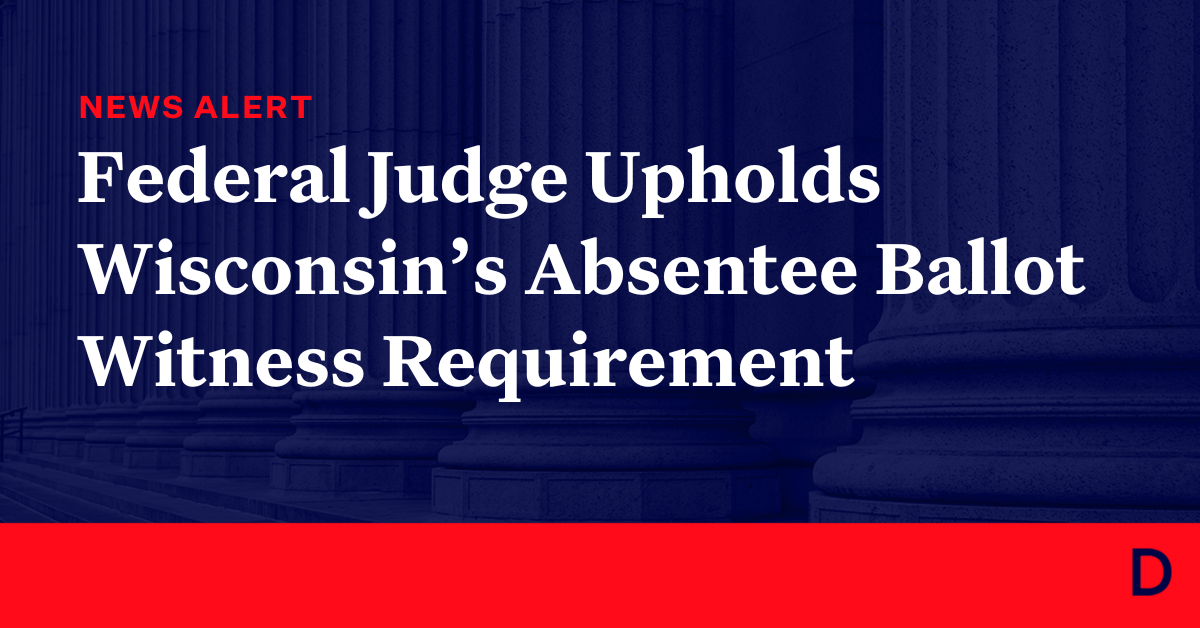
WASHINGTON, D.C. — A federal judge this afternoon upheld a Wisconsin law that requires absentee voters to complete their ballots in the presence of an adult witness, who must complete a written certificate containing a signature and address.
In a federal lawsuit filed last fall, four individual Wisconsin voters alleged that the state’s witness requirement violates Section 201 of the Voting Rights Act of 1965 (VRA). This lesser known section of the famous federal voting legislation prohibits denying the right to vote on the basis of a citizen’s failure to comply with a “test or device.”
Under the law, tests or devices include the “requirement that a person as a prerequisite for voting…prove his qualifications by the voucher of registered voters or members of any other class.” Section 201’s ban on “tests or devices” was codified in the original 1965 VRA to outlaw a discriminatory post-Civil War voting practice in which prospective voters would need a “supporting witness” to affirm their qualifications.
In addition to their VRA claim, the voters argued that the witness requirement contravened the Materiality Provision of the Civil Rights Act, which protects against disenfranchisement on the basis of trivial errors that are immaterial to a voter’s eligibility. The lawsuit pointed to the fact that during the 2022 midterm elections alone, over 2,200 absentee ballots were rejected due to witness certificate issues, such as a missing witness zip code.
In today’s ruling, Obama-appointed Judge James D. Peterson rejected both of the plaintiffs’ arguments. As for the voters’ VRA claim, Peterson wrote: “The bottom line is that the only reasonable interpretation of [Wisconsin law] requires a witness to certify that the voter prepared the ballot correctly; it does not require the witness to certify the voter’s qualifications.”
In terms of the voters’ Materiality Provision arguments, Peterson concluded that the “Provision does not apply to the witness requirement because it does not relate to “any application, registration, or other act requisite to voting.” The court relied heavily on a recent decision from the 3rd U.S. Circuit Court of Appeals in which a three-judge panel held that the rejection of mail-in ballots with an incorrect or missing date did not violate the Materiality Provision.
According to both Peterson and the 3rd Circuit’s reasoning, the Materiality Provision only applies to determinations regarding whether a person is qualified to vote. “The witness requirement is not a process for determining voter qualifications, so the Materiality Provision simply does not apply to it,” the opinion reads.
As a result of today’s ruling, Wisconsin’s absentee voters must continue to fill out their ballots in the presence of a witness, who is required to complete a signed certificate.
Meanwhile, litigation is ongoing in two state-level lawsuits concerning what components of a witness address are sufficient to have an absentee ballot counted.
In a set of January rulings, a Wisconsin judge held that any witness address information on the ballot certificate that is enough to identify a location where a witness can be reached is adequate. The judge also ruled that the rejection of absentee ballots due to certain witness address errors violates the Civil Right Act’s Materiality Provision. Wisconsin’s Republican-controlled Legislature appealed the rulings, which are currently being litigated in the Wisconsin Court of Appeals.
According to Democracy Docket’s database, there are five ongoing lawsuits surrounding absentee voting in Wisconsin. Earlier this year, voting rights groups filed a legal challenge to Minnesota’s witness requirement, which is currently proceeding in a Minnesota trial court.
Read the opinion here.
Learn more about the case here.
Wisconsin
Jarrid Houston column: Wisconsin fishing opener down, Minnesota is coming
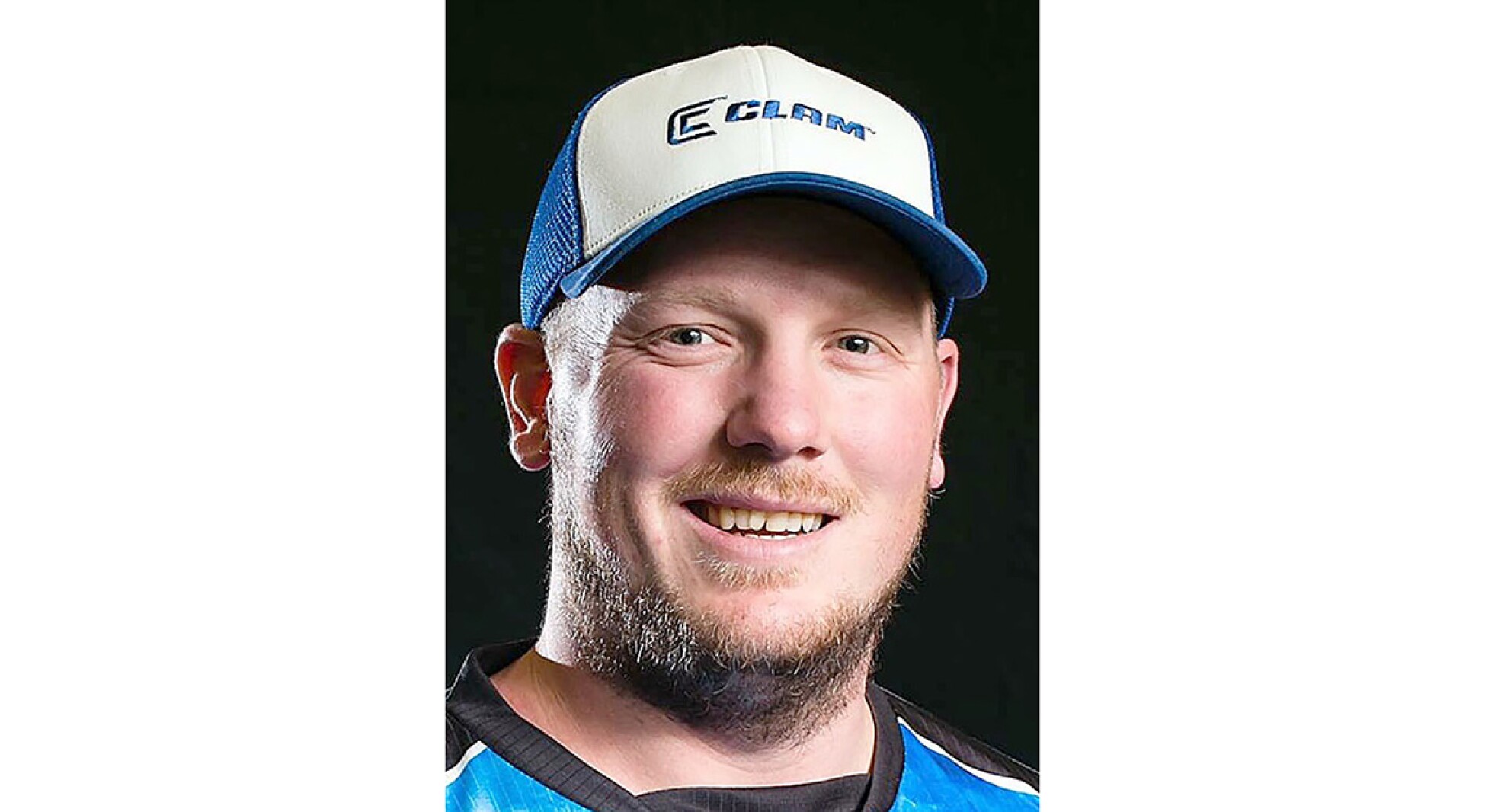
The “open” sign flashed brightly for the state of Wisconsin’s annual fishing opener last Saturday, and now it is Minnesota’s turn.
We think things are shaping up to be a good one. Despite an early ice-out this spring, water temps have been able to stay on the cooler side. A mix of cool days, as well as off-and-on recent rain showers, have kept water temperatures from spiking. That is good news for anglers because that should make for a longer-than-usual bite timeline. Still, this is fishing, and any avid angler knows you can be humbled.
With that said, let’s all be optimistic and hope for the best fishing opener ever. As of now, the weather looks to be decent, so let’s keep our fingers crossed for that. For the Wisconsin opener, we had to fish in the cold rain, which wasn’t ideal.
Let’s dig into the next big holiday we call the great Minnesota fishing opener:
Lake Superior anglers have had on and off days depending on what Mother Nature has provided. We can report that boat marinas are filling up with vessels, and boat traffic is picking up a tad. From Ashland to the North Shore, we will start to see more and more big water boats out trolling. Best fishing continues to be trolling shallow running stick baits in a few different colors that can change daily.
This week, it sounds like bright orange was best for getting some coho bites. Fish locations are not as concentrated as we were seeing a month ago, but that is typical as many spring rituals are in motion. We are just coming off a pretty decent smelt haul, and humans were not the only ones harvesting some tasty morsels. Best depths targeted for coho have been in and around the 80–120-foot areas, but similar to changing bait colors, these can vary often too.
For the charter captains about to take to the waters, have a great season, and we look forward to hearing what’s happening out there.
Stream fishing continues to be going decent for some anglers. The streams from Two Harbors up the North Shore are seeing a few good fish being caught. Fan-casting fly rods with float indicators over fly lures continue to get a few bites. Water levels have risen, and flow is going pretty decent at this time. We expect to see some canoe and kayakers taking to the streams as we move farther into May.
The St. Louis River Estuary will be one of the busiest places for walleye anglers for the next several weeks. We expect to see many anglers launching boats throughout the system. Water temperatures, as mentioned, are still on the cooler side, hovering around the 50-degree mark, which should be good. The big girls should be heading back toward Lake Superior, but as usual, some lucky anglers will have a hook-up with these big, beautiful fish.
Please make the right decision on harvesting. I have often heard people say old walleyes can’t reproduce, and that is absolutely inaccurate. And, I promise, if you take a fish out of the water, it will 100% have no chance to reproduce. Keeping a few fish is OK, just make sure to know the rules, and please, please only keep fish of the juvenile type — say under 18 inches.
For success on the lower river and harbor, I would look toward the channel edges and work a slow bait. Crankbaits can be ideal, but spring fishing is usually better suited with live bait rigs. Lindy rigs, spinner rigs, dead sticks, or one of my favorites, “corking” (bobber fishing), will all be good tactics. Your fishing electronics will certainly show a bunch of fish, but not all will be active. Once a big group of boats with several baits start infiltrating fish schools, they can turn off pretty fast. The point is, don’t be afraid to find areas of the river with less traffic.
On to the inland lake fishing bite. Let’s start with Wisconsin, as we have been on somewhat of a bite to start the season. Fishing started slow on opening weekend but has picked up a little since. Water temperatures are just over 50 degrees in many areas we have been fishing. Walleyes have seemed to be better morning, and later evening biters for whatever reason. Usually, during the early part of May, we can get them pretty consistently throughout the day, but not this year as yet. Pike have been easy picking working weed edges around the 10-foot depths. Some beefy fish can be tackled this time of year, so if the walleye bite is a little “off,” don’t be afraid to cast out some stick baits or spinner baits toward shorelines.
For panfish enthusiasts, we are just getting rolling on some nice crappie bites near deeper breaks. Wind-blown shorelines, cork and split shot, with a crappie minnow, is a good recipe for some crappie fishing. The sunfish will be going in the shallow, warm water soft bottom areas. Using a bobber and a worm chunk is a good bet.
For Minnesota opening morning, if you are looking for walleyes, don’t overlook the big flats near substrate transition areas. Rock to sand is hard to beat. We look forward to hearing of some success from all of you. Man, is it great to be back to fishing! Everyone have a safe and enjoyable week, and we will most definitely see you on the water.
Jarrid Houston of South Range is a fishing guide ( houstonsguideservice.com ) on Minnesota and Wisconsin inland waters, the St. Louis River and, in winter, on Lake Superior.
Wisconsin
Hearing the music of Wisconsin agriculture

by Ashley Hagenow
At the recent Alice in Dairyland Finals, I shared how much I love music. Music has been a constant theme throughout my whole life, and certainly in the role of serving as Wisconsin’s 76th Alice in Dairyland.
Whether I was greeted in the morning with an upbeat tune or used a song to help me fall asleep at night, music was always there, from the very early mornings through the late nights. On my long drives across Wisconsin, I have blasted my favorite songs as I sing along to the lyrics. Sometimes, music was there to provide some background noise or the beat for a little dance break. Music has felt like a constant companion throughout my Alice journey and has certainly provided inspiration to me as I proudly represented Wisconsin’s $104.8 billion agriculture industry this past year.
Telling a story
One of the things I love most about music is that it tells a story. Music tells a story just like Alice in Dairyland tells a story wherever she goes. The different parts of a song are like the different parts of a speech or key message that I’ve shared with audiences across Wisconsin, whether highlighting the economic impact of Wisconsin agriculture, all the opportunities available through careers in agriculture, or personal stories from my experiences in the agriculture industry.
The similarities between music and Alice in Dairyland are numerous. Throughout this incredible experience of serving as Wisconsin’s 76th Alice in Dairyland, here are some of my favorite “songs” I have sung while promoting Wisconsin agriculture.
My journey as the 76th Alice in Dairyland began on July 5. Last summer brought many opportunities to share my key messages across Wisconsin, whether at Farm Technology Days, the Wisconsin State Fair or many of the county fairs in our state. These events were also the opportunity to introduce myself as Alice to consumers across Wisconsin and beyond, just like the intro in a song.
Some memories include riding the 10-horse hitch of Meyer Farms at Farm Tech Days and engaging with our Alice in Dairyland partners for the first time, the cream puff eating contest at the Wisconsin State Fair, visiting my home county fair in Columbia County to host the Sale of Champions, and my first official trip to Door County to visit Washington Island and learn what makes Door County agriculture so diverse and special.
A great journey
Moving into the fall, the adventures of promoting Wisconsin agriculture continued, and my playlist of songs diversified. My top memories include engaging with fourth grade classrooms across the state to promote Wisconsin agriculture and specialty crops in our great state, walking the colored shavings at World Dairy Expo to deliver the Supreme Champion envelope, touring Alsum Farms and Produce to learn more about potatoes and pumpkins, witnessing my first Wisconsin cranberry harvest thanks to Amber Bristow, and traveling internationally with the Ginseng Board of Wisconsin to highlight Wisconsin ginseng and agriculture across the world.
Progressing into the holiday season and the first few months of the new year added new verses to the song of serving as Alice in Dairyland. The annual Holiday Campaign provided memories promoting our Something Special From Wisconsin members and products while making new connections with media outlets across the state. Attending events such as the Wisconsin Association of Fairs Convention and Corn and Soy Expo allowed me to reconnect with many familiar faces in Wisconsin. As a very involved FFA member growing up, I enjoyed sharing memories on social media during National FFA Week in February and how those experiences as an FFA member have shaped my personal and professional journeys in life.
As I prepare for the “outro” of my year serving as Alice in Dairyland, I have made some great recent memories while preparing for what is ahead in the next few months. Coordinating our Wisconsin Cheese Campaign with Dairy Farmers of Wisconsin yielded outcomes such as a national media engagement with RFD-TV and Wisconsin cheese samplings across our great state. We also have been developing our very first supper club campaign with the theme of “Eat Local, Eat Wisconsin With Alice in Dairyland.”
I am so excited to conclude my year as the 76th Alice in Dairyland promoting Wisconsin dairy and our state’s dairy farming families during National Dairy Month in June. I can think of no better way to celebrate this incredible year than through enjoying plenty of Wisconsin dairy products and countless adventures across our state. In just a few short months, I will be passing the microphone (and the keys to Tassie, my flex-fuel Ford Explorer vehicle through the Wisconsin Corn Promotion Board) to Wisconsin’s 77th Alice in Dairyland, as she begins an incredible year of promoting Wisconsin agriculture on July 8.
These are just some of the memories and experiences that I will cherish, and they truly demonstrate how something like Alice in Dairyland can bring an entire state together. Everyone is excited to “hear the music” when it comes to Wisconsin agriculture, and it has been the honor of a lifetime to represent this industry for the past year. Thank you all for being a part of this journey!
Hagenow is the 76th Alice in Dairyland.
-

 World1 week ago
World1 week agoStrack-Zimmermann blasts von der Leyen's defence policy
-

 Politics1 week ago
Politics1 week agoStefanik hits special counsel Jack Smith with ethics complaint, accuses him of election meddling
-

 Politics1 week ago
Politics1 week agoThe White House has a new curator. Donna Hayashi Smith is the first Asian American to hold the post
-

 Politics1 week ago
Politics1 week agoDemocratic mayor joins Kentucky GOP lawmakers to celebrate state funding for Louisville
-

 World1 week ago
World1 week agoTurkish police arrest hundreds at Istanbul May Day protests
-

 News1 week ago
News1 week agoVideo: Police Arrest Columbia Protesters Occupying Hamilton Hall
-

 Politics1 week ago
Politics1 week agoNewsom, state officials silent on anti-Israel protests at UCLA
-

 News1 week ago
News1 week agoPolice enter UCLA anti-war encampment; Arizona repeals Civil War-era abortion ban



